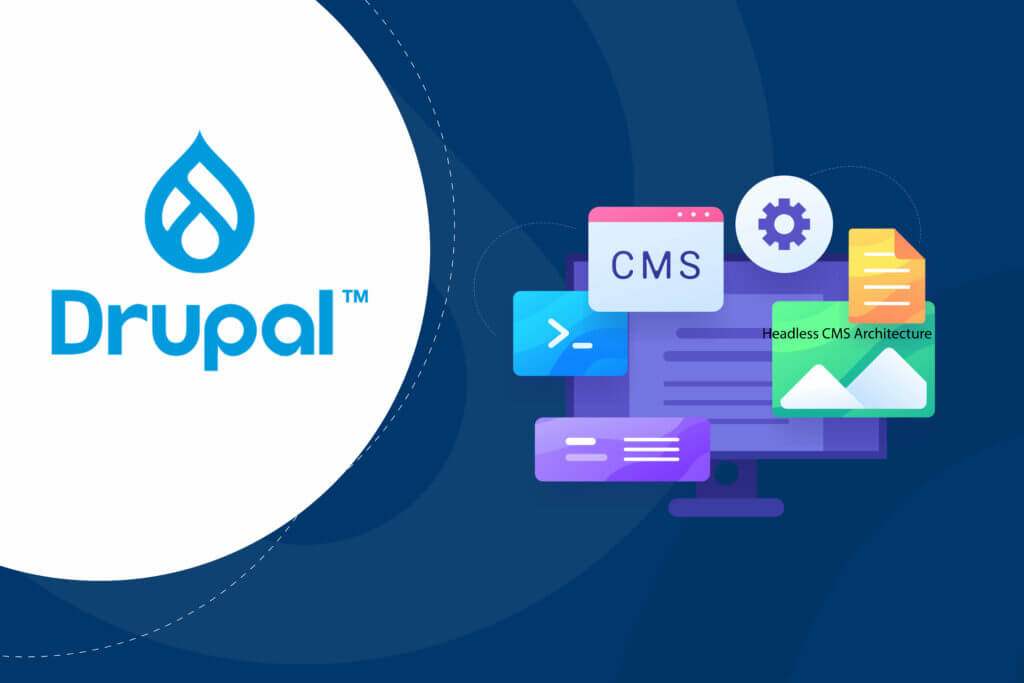Drupal is a powerful, open-source content management system (CMS) used for building and managing websites, web applications, and digital experiences. Known for its flexibility, scalability, and security, Drupal is especially popular for creating complex sites that require extensive customization and content management.
Table of Contents
Drupal
Drupal is a powerful, open-source content management system (CMS) that web developers use to build and manage websites, especially those requiring complex content and user management features. Written primarily in PHP, Drupal is known for its flexibility, scalability, and customization capabilities, making it suitable for a range of websites, from personal blogs to large enterprise and government websites.
Here’s a breakdown of what Drupal is and how it’s used in web development:

Key Features of Drupal
- Content Management: Drupal allows content creators to easily add, edit, and manage web content through a user-friendly admin interface. It supports various content types like articles, blogs, forums, and multimedia.
- Customizable and Extensible: Drupal’s modular architecture lets developers extend core functionality with thousands of available plugins (called “modules”) that can add new features such as SEO optimization, user analytics, and social media integration.
- Flexible Content Architecture: Drupal provides tools for managing complex data models, like custom content types and fields. This flexibility is a strong advantage for websites with diverse content needs, such as educational institutions, news sites, and e-commerce platforms.
- User Roles and Permissions: Drupal allows for fine-grained control over user access, making it easy to set up different roles (like admin, editor, or viewer) and manage permissions accordingly. This is particularly useful in large organizations where multiple people contribute to content.
- Responsive and Multilingual: Drupal is inherently responsive, ensuring that websites display well across different devices. It also offers strong multilingual capabilities, allowing developers to create content in multiple languages.
- Security and Performance: Drupal is known for its robust security features, which make it popular for government and financial sector websites. It also includes caching mechanisms and performance optimization tools to help websites handle high traffic.
How Drupal is Used in Web Development
Drupal is widely used by developers to create, deploy, and maintain dynamic, data-driven websites. Here’s how it fits into the web development workflow:
- Site Building and Structure:
- Developers use Drupal’s built-in tools to define the content architecture, user roles, taxonomies, and navigation structure of the website.
- They can create content types and customize fields to match the specific needs of the website, like adding custom fields for e-commerce product details or event calendars.
- Theme Development:
- Drupal themes control the front-end presentation of the website. Developers can create custom themes using HTML, CSS, JavaScript, and the Twig templating engine (the templating engine Drupal uses).
- Themes can be customized or created from scratch to ensure the website aligns with the brand’s look and feel.
- Custom Module Development:
- Drupal’s modular structure allows developers to create custom modules to add new functionality. For example, a custom module could be used to integrate a hosting service (e.g., a CRM system) or add a specific feature that isn’t available in the core system or contributed modules.
- Database and Content Management:
- Drupal stores content and configuration data in a database, typically MySQL or MariaDB. Developers can use Drupal’s API to programmatically interact with the database, allowing for complex content relationships and custom data queries.
- Configuration Management:
- Drupal provides a configuration management system that allows developers to export and import site configuration settings. This is essential for maintaining consistency across development, staging, and production environments.
- Search Engine Optimization (SEO) and Analytics:
- Drupal includes SEO-friendly features such as URL aliases, meta tags, and integration with analytics tools. Developers can further enhance SEO by adding specialized modules for managing metadata, creating XML sitemaps, and optimizing site performance.
- Maintenance and Scaling:
- Once deployed, Drupal websites require regular updates for security and performance. Drupal’s active community releases frequent updates, and developers ensure the site remains secure and up to date.
- Drupal is highly scalable, so it can handle high-traffic sites with the help of load balancing, caching, and other performance optimization techniques.

When to Use Drupal
Drupal is ideal when:
- The site requires complex data structures and user permissions.
- High flexibility and customization are needed.
- The project is large-scale, enterprise-level, or government-related.
- Multilingual support or high security is a priority.
However, for simpler sites or smaller projects, lighter CMSs like WordPress may be more suitable. Drupal’s advanced features and customization potential come with a learning curve, so it’s generally favored by developers with more technical experience.
Examples of Websites Built on Drupal
- Government Websites: Many government agencies (like whitehouse.gov and the European Commission) use Drupal due to its robust security and multilingual support.
- Educational Institutions: Universities and schools use Drupal to manage vast amounts of content and handle diverse user needs, including faculty, students, and alumni.
- Nonprofits and NGOs: Drupal supports complex content needs and community engagement, making it ideal for organizations like Amnesty International and the United Nations.
- Media and Publishing Sites: Drupal’s flexibility in managing various content types makes it popular for news and media websites like BBC Good Food and The Economist.
Conclusion
Drupal is a powerful tool in web development for building scalable, secure, and content-rich websites. Its flexibility and modularity make it especially appealing for complex projects where customization and robust content management are essential.


